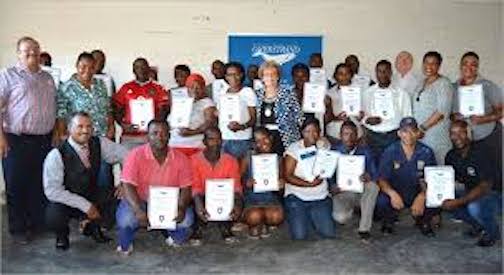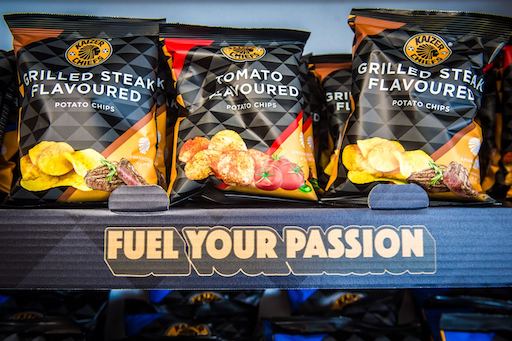Street committees told to be more developmental in orientation

THANDISIZWE MGUDLWA I Tuesday, July 11, 2023
CAPE TOWN; South Africa – THE time has come for the purpose and roles of Street Committees to be reviewed for our collective revival.
In this article, we get to look at a wide variety of perspectives from expert and community leader analysis on what needs to be done to use this layer of leadership for effective governance. Street Committees have the powerful potential to unlock service delivery lock-necks.
According to the IGI Global Publishing House Street Committees were committees created in the 1980s and were democratically elected committees meant to cater for needs and challenges facing community members in their respective streets or areas.
Published in Chapter: Entrenching Community (Participatory) Governance Through Street Committees at Cato Crest, eThekwini Municipality by Ndwakhulu Stephen Tshishonga (University of KwaZulu-Natal, South Africa), this document seeks to illustrate the purpose and role of Street Committees, IGI Global Publishing House, shares some interesting thoughts on what and how Street Committees can best serve the people.
In an abstract of the paper: this chapter explores the role of street committees in retrenching and grounding community participatory governance at Cato Crest.
The chapter is purposed to revitalise street committees as street/area democratically elected and managed structures aimed at restoring inclusive local democracy, peace, and order, especially in the prevalence of domestic violence, crime, community disunity and divisions, disobedient youth, and other antisocial behaviours.
The author argues that the current configuration of street committees as partisan structures compromises their fundamental purpose of uniting people regardless of race, culture, gender, and socio-economic class.
The chapter also found that without clear developmental roles, street committees are often highjacked to serve a party political agenda.
In addition, the chapter is qualitative in nature when data were collected through observation and face-to-face interviews with street committees at Cato Crest.
The empirical data was also enriched by secondary sources in the form of journal papers, books, and government reports.
According to the Vukukhanye Community Upliftment Initiatives the primary objective of Street Committees is to involve the community of a particular area in creating a happy, peaceful and productive environment by encouraging community members to take a greater interest in, and responsibility for, their community.
The success of Street Committees hinges on community involvement and effective communication with local government departments, including, police, social welfare, infrastructure services etc.
Ivan Ntsasa Mngqibisa in the role of street committees in the governance of informal settlements: a case study from Waterworks Township, Grabouw, published by the University of Cape Town.
The abstract goes: Community participation has become a key concept in research on the development and governance of underprivileged communities.
It is on these grounds that the post-apartheid South African government has encouraged meaningful participation between local communities and the state, particularly through structures of local government.
However, the role that street committees can play in the realisation of this ideal has received little attention from either government or academic scholars.
For this reason, this study examines the role that the street committee in Waterworks, Grabouw, in the Western Cape plays in community governance. It analyses data from a qualitative study which took place between 2007 and 2008, states Mngqibisa.
“In this thesis I argue that while the street committee has a role to play in the governance of the community, that role is limited by their lack of power. The street committee is not a statutory body and this hinders their ability to participate in local government issues.
Despite these restrictions, the street committee in Waterworks was largely perceived by the local residents as doing their best in addressing pertinent issues. However, there were some who accused members of the street committee of nepotism and seeking political patronage,” noted Mngqibisa.
Former Minister of Police, Fikile Mbalula told Members of the National Assembly (NA) when he delivered the 2017/18 Budget Vote of the Police Department at Parliament: “We need to close the oxygen for criminals. Their breath should be limited. Their conception of life should be reduced to the ordinary. Their contemplation of reality should be reduced into nothing. This is our war cry against criminals and criminality in the Republic of South Africa,” emphasised Mbalula.
He said street committees are very important in the fight against crime. “We are realistic that we cannot win the fight against crime without the involvement of civil society. The Ministry is in the process of reviewing the Community Police Forum Policy. This will ensure that we build strategic partnerships with the communities in our effort to push back the frontiers of criminality,” Mbalula added.
And according to the Bonteheuwel Development Forum (BDF); A street/block committee MUST unite around issues affecting it’s street, block or neighbourhood and can therefore not be aligned to any political party, neither should it be open for use or abuse by any party or political figure.
The BDF Mission is to combat poverty, inequality and social ills through community centered social, educational and economic development interventions.
In 2018, 7 March, as reported by the Grocott’s Mail, citizens from Grahamstown East took part in an exciting event at BB Zondani Hall in Fingo Village. The South African Police Service (SAPS) in conjunction with Makana Municipality launched the community street committees initiative as a way to improve safety and reduce crime.
The initiative serves as a way to empower citizens and encourage visible policing within communities that suffer from high crime rates.
Reverend Gxaleka opened the event by emphasising the importance of building relationships in the community. “We must build relationships so we can speak with one voice,” he said. Speaking to the issue of halting crime, he said, “We need people to do umsebenzi [the work].”
Street Committees have the powerful potential to unlock service delivery lock-necks. In all likely-hood, Street Committees should serve more as empowerment agencies if they are to be relevant and effective going into the future.
Street Committees should be running Feeding Scheme programmes in partnership with other stakeholders.
And Street Committees need to also look for other problems facing residents they can solve finding help from community structures, business community, government and other sectors to improve the lot of the people. They should be communicators of their constituencies on everything developmental within and outside the street/community.
Moreover, Street Committees should make use of social media tools like Facebook pages, WhatsApp Groups for all residents, to further inform the residents on Job and Business opportunities, workshops, seminars and any training that takes place in the street and community and elsewhere.
Regular meetings at community halls or other easily accessible venues like churches or schools to engage with all residents on matters concerning their street.
Activities for different groups in the streets must form part of the developmental imperative of Street Committees including sport, recreation and arts for the young and old. In this way, Street Committees will be bringing government and service delivery closer to the people.
NB: Mgudlwa is a freelance journalist
LINK: https://starconnectmedia.com/2023/07/street-committees-in-south-africa/





